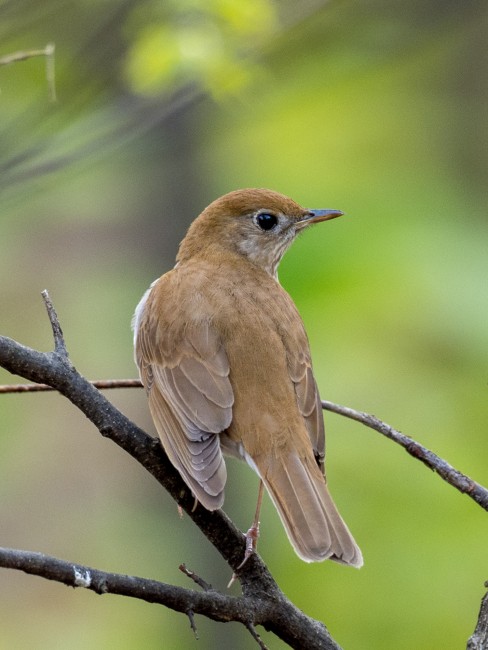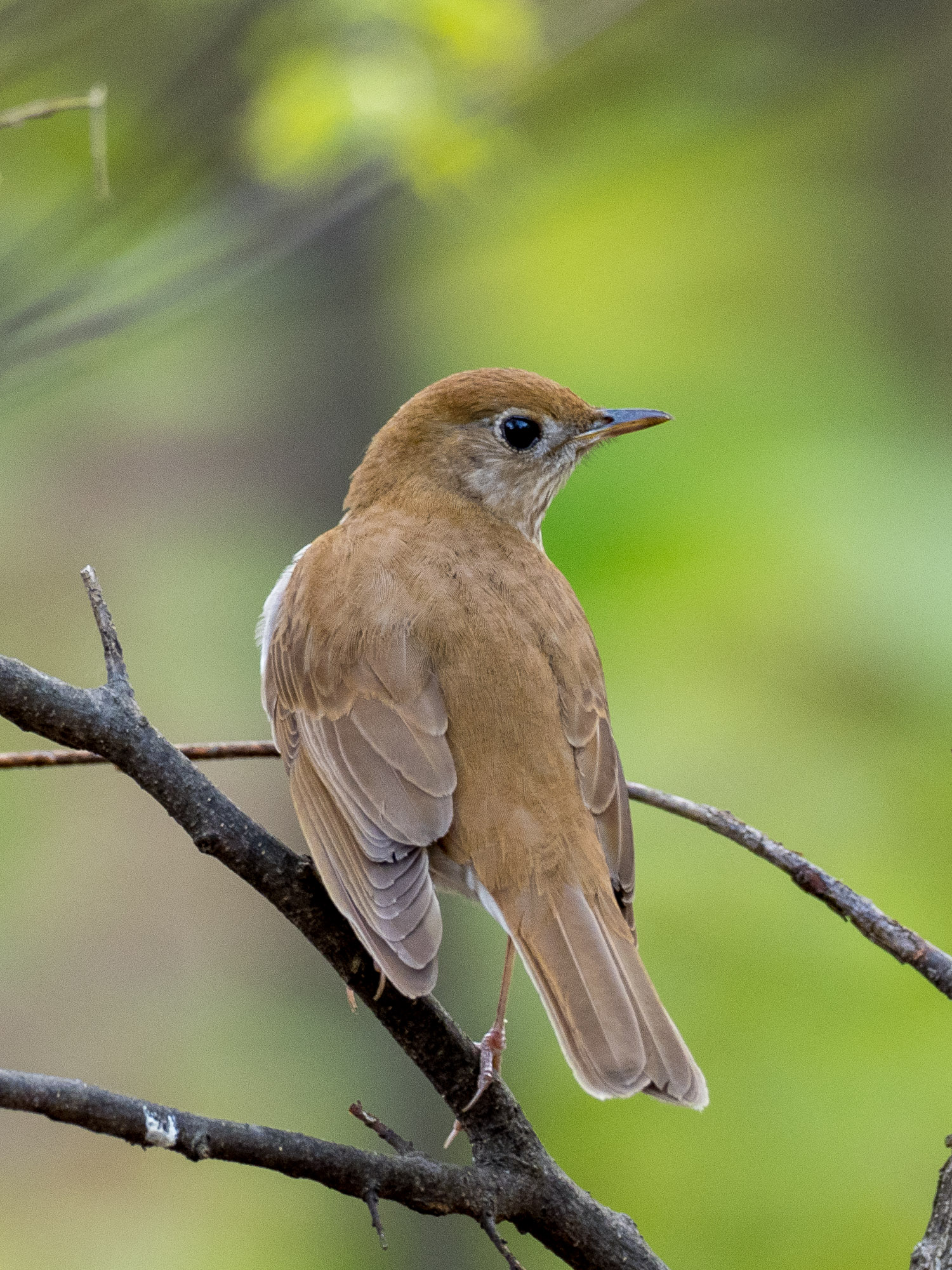
May 25, 2020
Who’s That Singing?
- as seen by -
 Sylvia Alexander
http://onwatchingbirds.com
Sylvia Alexander
http://onwatchingbirds.com It’s springtime in New York City, and we’re on lockdown to help stop COVID-19 from spreading. But the birds are migrating anyway, and we hear them outside our windows, singing, calling, quarreling over nest sights and mates. And some of those sounds are just plain lovely: the fluting of a Baltimore oriole (Icterus galbula), the soft whinny of an eastern screech owl (Megascops asio), the alien whirl of a veery (Catharus fuscescens), or the thrushy lilt of the American robin (Turdus migratorius), often heard around 4 am, when springtime hormones kick in. The northern cardinal (Cardinalis cardinalis) has several songs that provide a real workout for its two-pronged voice box (or syrinx). One of these is a whistling whoop which it begins at the bottom of one windpipe and finishes at the top of the other. The dual structure of the syrinx is why some birds sound like they’re harmonizing with themselves, which they are.
Twenty years ago when I began studying birds, mentors commonly said that the best way to learn avian songs was by listening to CDs. These days, though, there are revelatory tools like Merlin, a free App created at the Cornell Ornithology Lab. After you download a “bird pack” for where you live (e.g. Northeastern USA), Merlin produces a “most likely” list which you can explore by photo and audio until you find that mystery bird calling outside your window. Merlin is even connected to eBird, the global reporting database used for wild bird censuses at WCS’s Bronx Zoo and elsewhere.
If you’d like to learn more, Cornell offers an entire self-guided course called The Joy of Birdwatching, with beautiful photos, audio, videos, and the best in ornithological science. I highly recommend it, not only because it’s fun and reasonably priced, but because it goes into detail about how to use Merlin, eBird, and other tools (including our very own eyes and ears) to get to know our feathered neighbors. And this is a perfect time to enjoy birding (well, there’s never a bad time), because with most noisy humans quarantined inside, you can actually hear birds singing.
EDITOR’S NOTE: This beautiful photo of a veery is by NYC bird photographer, Fernand Brunschwig/fbrunsch@gmail.com. If you run into a veery face on (in a deciduous forest somewhere in North America), it has spotting on the upper chest and pale underparts, and it’s a bit smaller than its fellow thrush, the American robin.
Olympus E-M1 Mark III with Olympus M.300 mm Super Telephoto Lens




Leave a Comment